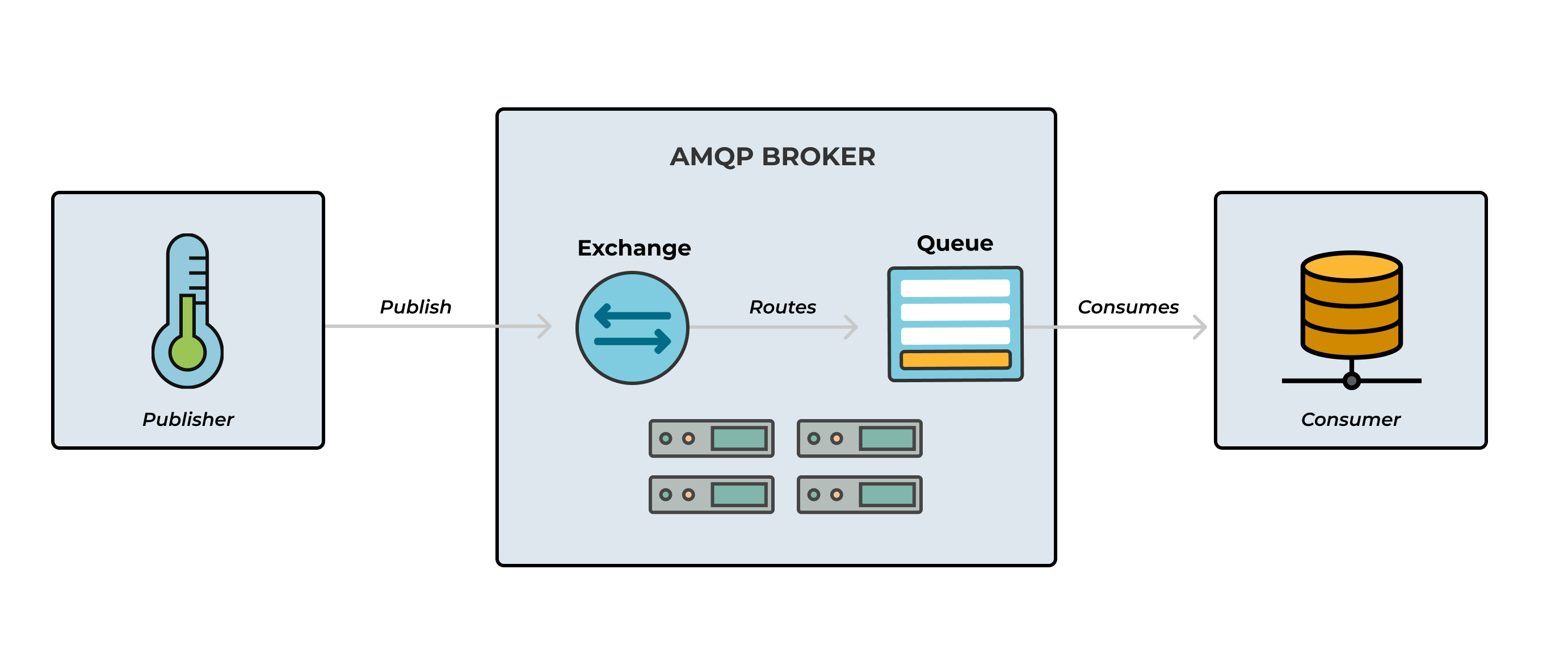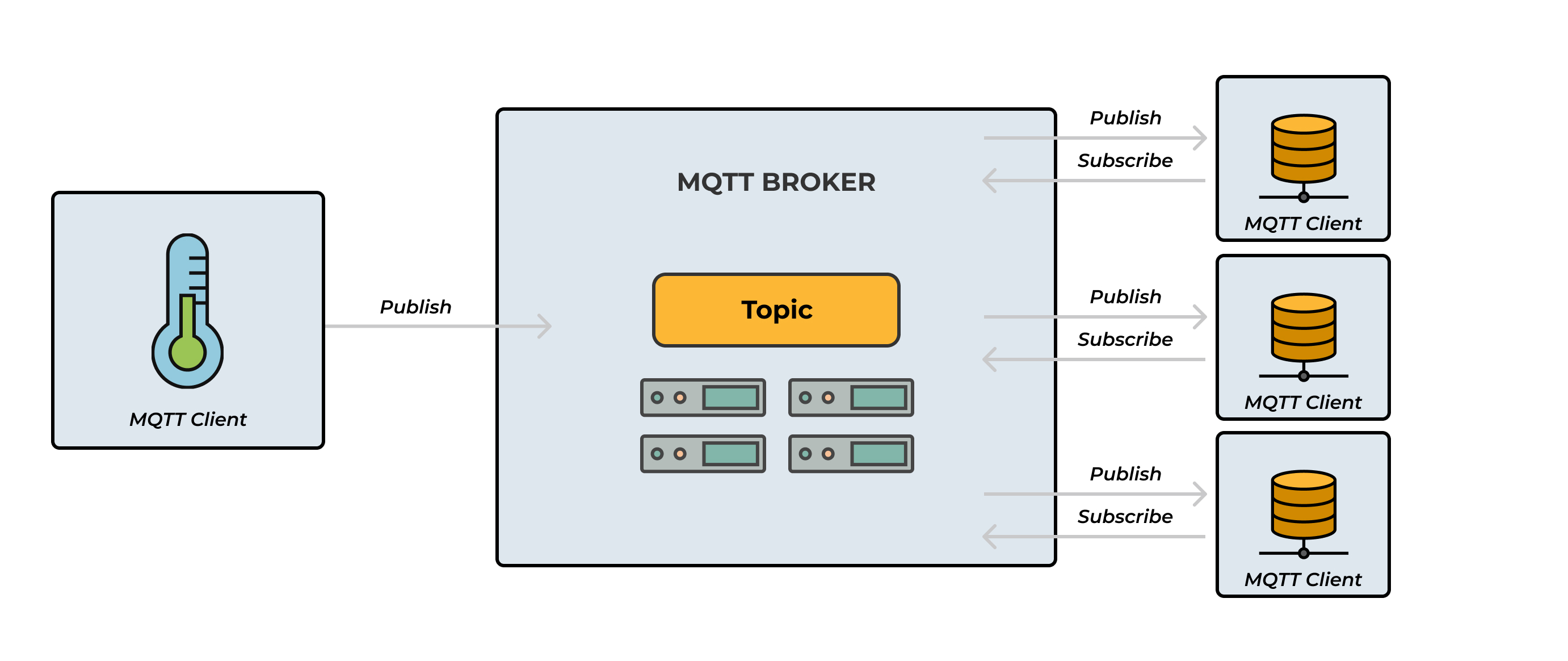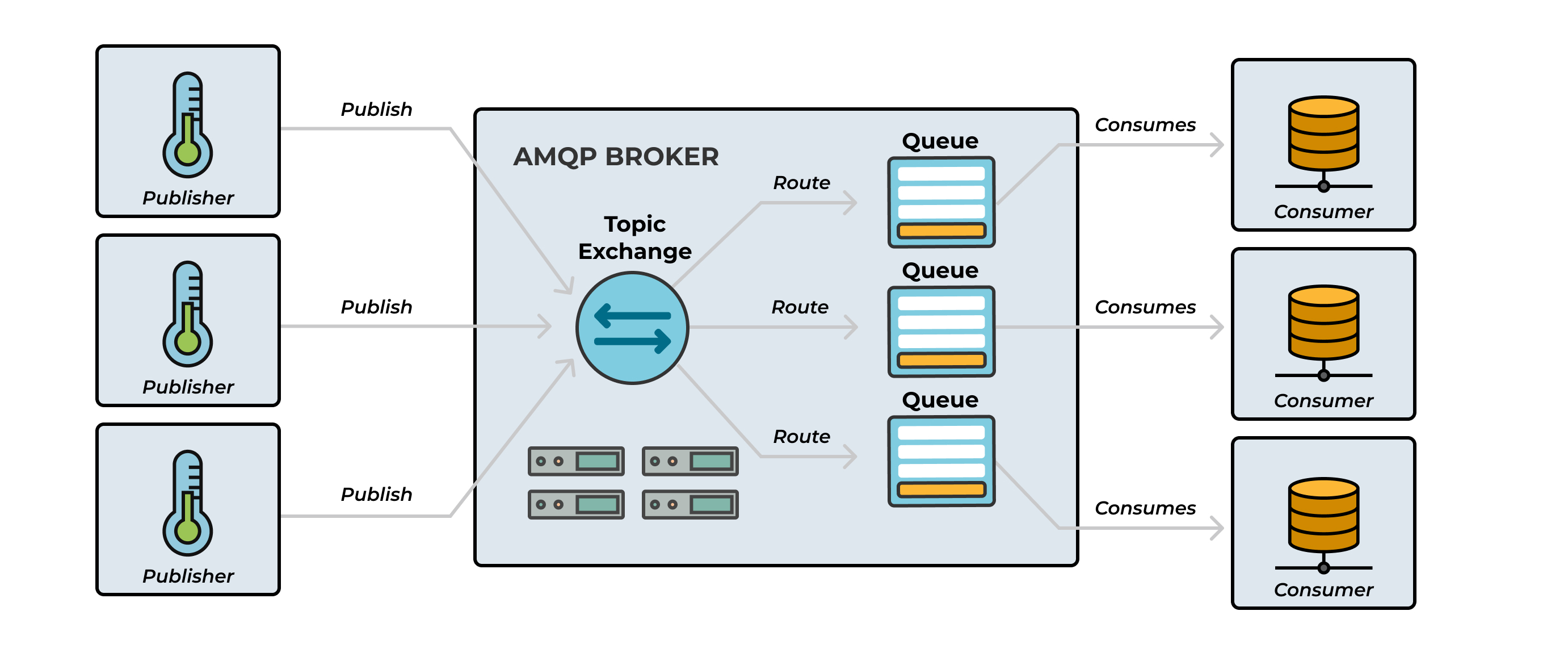Today's world is so interconnected and proliferated with data. Thanks to systems that are constantly interacting with each other. But what does this interaction look like?
One way these systems communicate is by leveraging messaging protocols. Two popular messaging protocols that have gained significant traction in recent years are:
- AMQP (Advanced Message Queuing Protocol)
- And MQTT (Message Queuing Telemetry Transport)
Both protocols have their strengths and weaknesses. Thus, it is imperative to understand their similarities, differences, and use cases.
In this blog post, we will delve into the world of AMQP and MQTT. We will compare and contrast them. This could help you make informed decisions when choosing the right messaging protocol for your needs.
But to begin, let’s start with the basics…
What are protocols?
If you are already familiar with the concept of protocols, feel free to skip to the AMQP and MQTT section.
Computers and the internet are modern inventions. So it's natural that many terms used in the computing world come from non-technical concepts. These concepts existed long before computers and the internet existed.
Let’s take the case of protocols.
In the non-technical world, a protocol refers to a set of established rules or guidelines that govern interactions between individuals or groups. For example, when you attend a formal event or gathering, there is usually a protocol to follow regarding dress code, behaviour, and manners. This protocol ensures that everyone understands how to act and interact within the context of the event.
Similarly, in the computing world, a protocol refers to a set of rules that dictate how computers and devices communicate over a network. Just like following a protocol at a social event, network protocols define how data is transmitted, received, and understood between different devices on a network.
In other words, in computer networking, different devices use network protocols to establish a common language for communication. These protocols define the format, structure, and rules for exchanging data.
Essentially, a protocol is a body of knowledge usually spelled out in a written document. For example, there is a document that contains the set of rules that define the AMQP protocol and one for the MQTT as well.
An application developed strictly following the rules outlined in the AMQP document can only be understood by other applications that conform to those rules. This is how protocols work in the computing world.
Let’s explore AMQP and MQTT a little bit more.
Introducing AMQP and MQTT: Protocols in context
AMQP and MQTT are messaging protocols designed to facilitate communication between distributed systems. Although they serve a similar purpose, they differ in their underlying principles and use cases.
AMQP, Advanced Message Queuing Protocol, is an open standard protocol designed for reliable and secure messaging. “Open standard” simply means that the document that defines the rules of the AMQP protocol is out there for everyone to use and design AMQP-compliant applications.
Fundamentally, AMQP follows a brokered messaging pattern. In that pattern, the message broker acts as an intermediary between publishers and subscribers. Messages are published to an exchange in the broker first. The exchange acting as the routing agent, forwards these messages to the appropriate queue using its routing rules.

Figure 1 - AMQP Broker
MQTT, Message Queuing Telemetry Transport on the other hand, is a lightweight and efficient open standard protocol. MQTT is optimized for constrained devices and unreliable networks.
MQTT also follows a brokered pattern where publishers publish messages to a topic in a broker. The broker then broadcasts these messages to all the consumers subscribed to the topic. You probably know this as the publish-subscribe pattern.

Figure 2 - MQTT Broker
While AMQP and MQTT are alike in some ways, they differ in some ways as well. Let's review the details.
AMQP vs MQTT: The similarities
Despite their distinct design goals, AMQP and MQTT share some common characteristics. Let's explore these areas of similarity.
Publish-Subscribe Model
Both AMQP and MQTT support the publish-subscribe messaging pattern. A message from one publisher could be broadcasted to multiple subscribers.
Even though the two protocols differ distinctly in how they implement the publish-subscribe mechanism (as we will see later), in the end, the messaging pattern is achievable with both brokers.
Asynchronous Messaging
AMQP and MQTT both support asynchronous communication. In this communication pattern, the publisher sends messages to the broker without waiting for a response from the broker.
As a result, both the publisher and subscriber do not have to be online at the same time to be able to communicate. This is possible because, in both protocols, the broker sits between the publisher and the subscriber/consumer - totally decoupling the two entities.
Quality of Service (QoS)
Both protocols offer multiple levels of QoS to ensure reliable message delivery. They provide options for at-most-once, at-least-once, and exactly-once message semantics. This allows developers to choose the level of reliability that suits their application requirements.
It is also worth mentioning that both protocols exist at the application layer. But that’s about where the similarities end. Now, let’s review some of the differences.
AMQP vs MQTT: The differences
While AMQP and MQTT share some similarities, they differ in several aspects. Let's examine these differences in more detail.
Messaging Patterns
As mentioned earlier, the AMQP protocol supports a more sophisticated routing mechanism. Messages first go to an exchange that then routes the messages to the correct queue using some predefined rules.
Because the AMQP protocol supports multiple exchange types with unique routing strategies, this results in the AMQP protocol being able to support different communication patterns - for example:
- There is the publish-subscribe messaging pattern that we’ve mentioned previously.
- Additionally, it also supports the point-to-point messaging pattern where a message is routed to a single consumer only.
The MQTT protocol, on the other hand, has a very simple routing mechanism. Messages are published to a topic and broadcasted to all the consumers registered with the topic. No exchanges and queues involved in MQTT.
By design, the MQTT protocol primarily supports the publish/subscribe messaging pattern. Even though AMQP also supports this messaging pattern, the MQTT protocol does it more efficiently, because it is optimized for that use case.
This is true because, to implement the publish-subscribe pattern with AMQP, first, you will declare an exchange. You will also need to declare multiple queues, and bind them to the exchange. Consumers then subscribe to the declared queues as shown in the image below.

Figure 3 - MQTT with AMQP
This extra layer of using exchanges and queues introduces an overhead in this scenario that could easily be minimized if not eliminated with the MQTT protocol.
Flexibility and Complexity
In addition to its sophisticated routing mechanism, AMQP offers a rich set of features. These features include message persistence, and transactionality amongst others. This makes it highly versatile - it could be used in a wide range of use cases. But the downside is, it is more complex to implement and manage.
MQTT, on the other hand, focuses on simplicity and ease of use, sacrificing some advanced features for streamlined communication.
Overhead and Efficiency
AMQP’s rich set of features and sophisticated routing mechanism provides advanced functionality at the cost of increased overhead. AMQP requires a more substantial network footprint and computational resources compared to MQTT. This is true because MQTT is designed to be lightweight and efficient, prioritizing bandwidth and power optimization.
AMQP vs MQTT: Use cases
Given the unique strengths and weaknesses of each protocol, it is reasonable to assert that each protocol would have its typical use cases where it excels.
Let’s delve into some of these use cases.
AMQP
AMQP is versatile and finds its best fit in scenarios that require reliable, secure, and efficient communication between various systems and devices.
In other words, AMQP excels in use cases where messages need to be delivered without loss or duplication. It also excels in scenarios where complex routing is necessary, and different applications and platforms must seamlessly exchange information.
One specific use case where reliable message delivery and complex message routing options might be required is in financial transactions.
Financial Transactions
In the world of finance, timely and accurate messaging is essential for conducting transactions, managing risks, and disseminating market data. AMQP ensures that messages related to trades, payments, or market updates are reliably delivered to their intended recipients without any loss.
Furthermore, its advanced routing capabilities allow messages to be efficiently directed to specific systems or departments. Some examples are trading desks and risk management platforms. AMQP's interoperability ensures smooth communication between different financial systems and networks, regardless of the technologies they employ.
MQTT
MQTT is lightweight and primarily designed for constrained devices and unreliable networks. It is well-suited for use cases where low power consumption, minimal bandwidth usage, and reliable message delivery are crucial.
In the real world, one specific use case where MQTT shines is in the IoT space. But what is IoT?
Internet of Things (IoT)
The Internet of Things (IoT) is a concept that refers to a network of everyday objects, devices, and sensors that are connected to the Internet and can communicate with each other. These objects can be anything from household appliances like thermostats and light bulbs to vehicles, wearables, and even industrial machinery.
The idea behind IoT is to enable these objects to gather and share data, as well as interact with us and other devices, making our lives more convenient and efficient.
For example, imagine being able to control your home's temperature, lights, and security system from your smartphone, or having your fitness tracker send data to your doctor for monitoring. IoT allows for smarter, interconnected devices that can enhance our daily lives and improve various aspects such as health, safety, energy efficiency, and productivity.
MQTT and Internet of Things (IoT) Applications
MQTT is widely used in IoT deployments where devices, sensors, and systems need to exchange data efficiently. It enables communication between numerous IoT devices, allowing them to publish data and subscribe to specific topics of interest.
For instance, in a smart home scenario, temperature sensors can publish temperature readings, while the home automation system subscribes to receive and process those readings. MQTT's lightweight nature and support for low-power devices make it an ideal choice for IoT applications with resource-constrained devices.
Conclusion
Choosing the right messaging protocol for your application requires a clear understanding of your requirements and the strengths of available options. AMQP and MQTT, despite their differences, both serve as powerful tools for enabling efficient communication in various scenarios.
While AMQP caters to enterprise-scale applications with its robustness and advanced features, MQTT excels in resource-constrained environments, emphasizing efficiency and simplicity. By considering the similarities, differences, and use cases of AMQP and MQTT, you can make an informed decision and design a messaging infrastructure that meets your specific needs.
Ready to compare AMQP and MQTT? RabbitMQ supports both protocols. You can create your RabbitMQ instance on CloudAMQP effortlessly and test things out.
Ready to compare AMQP and MQTT? RabbitMQ supports both protocols and CloudAMQP is one of the world’s largest RabbitMQ cloud hosting providers. In addition to RabbitMQ, we also created our in-house message broker, LavinMQ with a throughput of around 1,000,000 messages/sec.
Easily create a free RabbitMQ or free LavinMQ instance on CloudAMQP. All available after a quick and easy signup.
For any suggestions, questions, or feedback, get in touch with us at contact@cloudamqp.com






